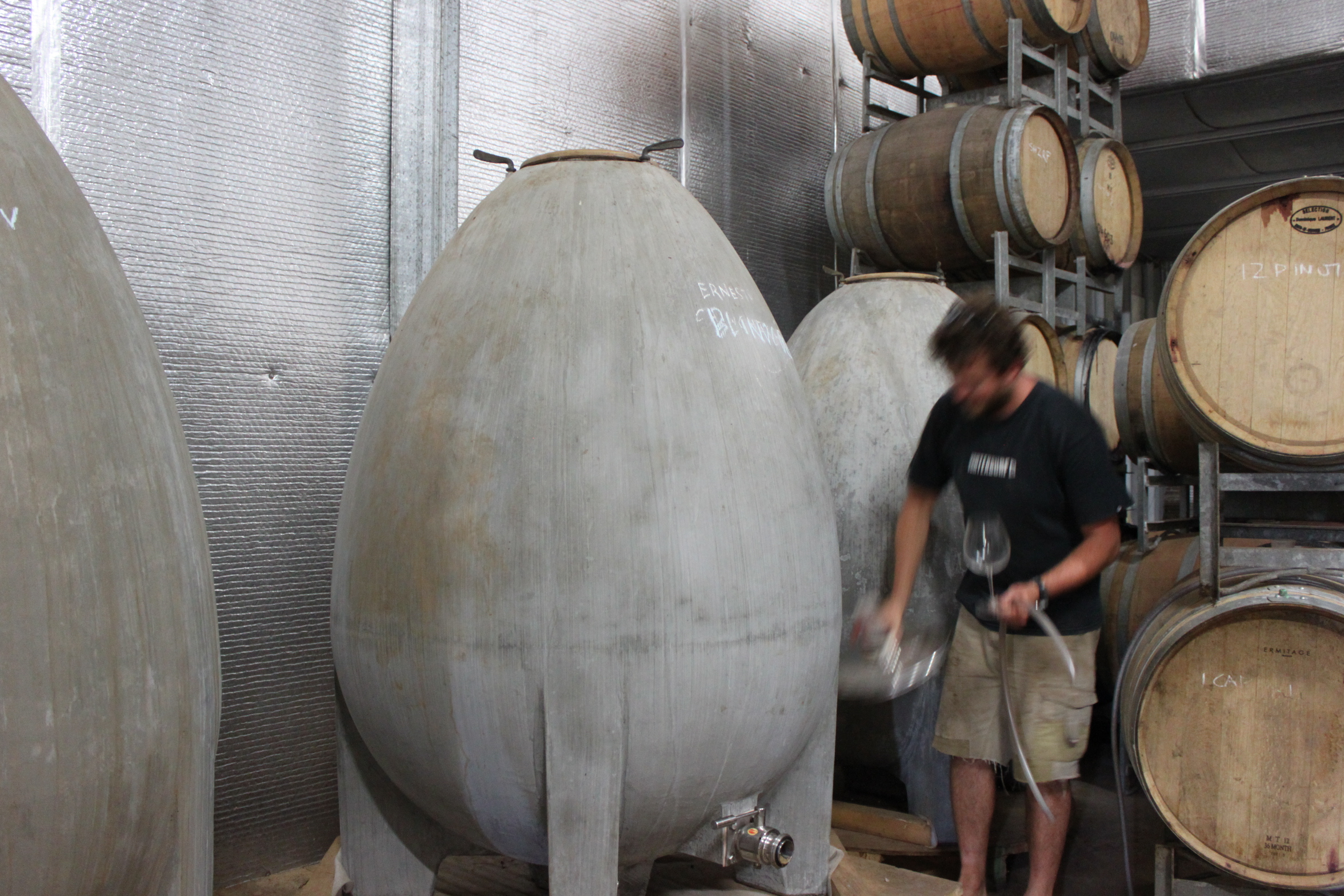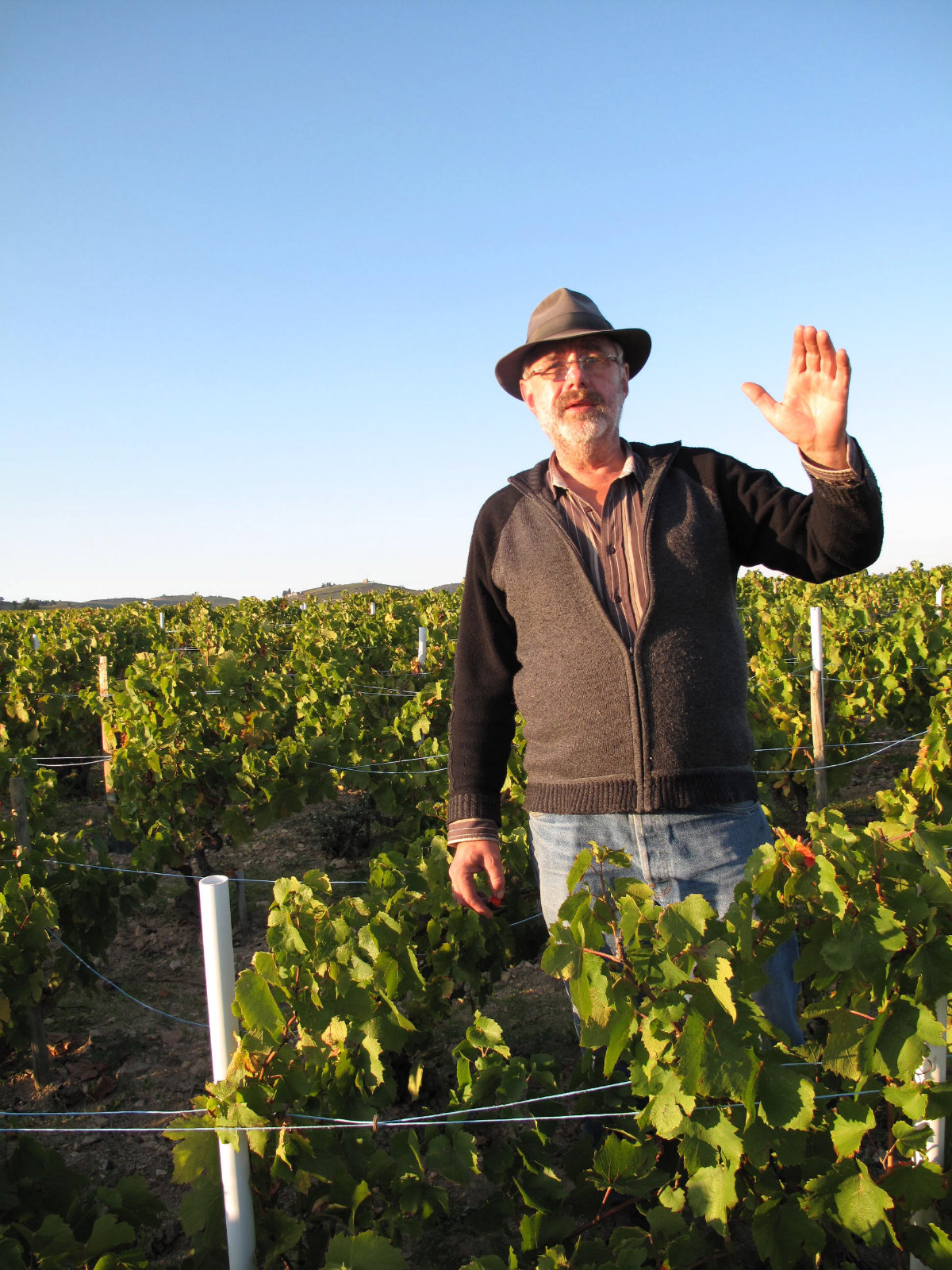
A is for additives such as acidification. If it ain’t broke don’t fix it and if it is broke it’s the fault of the way the wine is made in the vineyard. Also for adulteration. Also for amphora, autochthonous grapes, ancestral method (sparkling wines), aldehydes, artisan and ambient (ferment). A is for alcohol level which tends to be lower in natural wines.
B is for biodynamics and biodiversity of bugs, bees and birds. Beaujolais, home of Jules Chauvet and his disciples. B is for bars, in particular the natural wine bars which provide the closest link between the consumers and the growers. B is also for bumbling (or brazen) bureaucracy. B is for balance in respect of alcohol and oak.
C is for chemical, compacted soils, conventional, conformist, confected, common denominator, commercial, conservative, crustafarian and critical. In terms of natural wine it stands for controversies and for Jules Chauvet. C is for carbonic maceration and for cement or concrete tanks which are preferred for natural ferments. C is for certification which is essentially meaningless whilst there are so many different authorising bodies with different standards.
D is for dumbing down by assuming that the man on the Clapham double-decker bus can only be seduced by the cheapest, lowest common-denominator wines. D is for de-, de-noting the de-sire to strip away and denature the essential personality of the wine. D is for drinkability, the primary function of natural wine where neither extraction nor alcohol is sought.

E is for enzymes. E is for eggs (ovoid cement betons) wherein the wine ferments. E is for the excellence to which natural wines do not aspire but often achieve. Energy, which biodynamics seeks to channel and which great natural wines possess. E is for extraction, which many winemakers seek to achieve in the belief that darker, richer, riper wines are objectively better and for extraction of colour in skin contact wines (q.v.).
F is for fining and filtration, flavoured yeasts, F is for foudres. For ferments of the wild kind. For fairs that celebrate growers and their wines. F is for faults or flaws and whether they are fundamental or part of the warp and the weft of the wine. By extension f is also for funky which may or may not be desirable and whereas some will find this fun, for others it will strike a false chord. Fun is also short for funambulism, the kind of no safety net style of winemaking that natural winemakers are said to espouse.
G is for gunk that you can find at the bottom of unfiltered wines. G is for gentle extraction and gravity-fed wineries. Also for globalisation which has led to common denominator winemaking and the growth of international grape varieties and uniform styles. And in the rebirth of traditional vinification in Giare which are Italian clay amphorae, the use of which is becoming more common.

H is for horns (of cattle) and horses an integral part of the armoury of the biodynamic farmer. H is for hand from hand harvesting to hand punching natural wines are made by hand. H is for homeopathic treatments used in holistic organic and biodynamic farming and for vineyard health.
I is for individuality and integrity. I for the intervention and intention. For intuitive winemaking.
J for juiciness, a quality that is often undervalued. J is for judges and judging, the bane of natural wines which are rarely (if ever) entered in comparative tastings, leading to medals and awards for the usual suspects. The wheel of wine turns and remains in the same place. J is for Jura, a region where natural wine pilgrims visit to learn the lore of the flor and to top up their knowledge of ouille and Houillon.
K is for kinetic as a description of fluidity in wines, kinship (of growers) and kvetching bloggers
L is for lees, the life-blood of wine, for labels that stick two fingers up at recondite appellation regulations, L is for the Loire the fermenting centre of natural wine.

M for manure, m is for minerality, Marcel Lapierre. M is also for manipulation. M is for the Marie Thun calendar which many growers use to govern the activities in their vineyards and wineries. For music played by some winemakers to their wines as the fermentation ticks over the barrel.
N is for natural or naked which are as good words as any to describe these type of non (or low) – interventionist winemaking (by which is meant non-chemical additions). N is for nowt (taken out or added).
O is for oak, particularly new oak, which can mask the true flavour of the wine. Also for oxygen which can lead to oxidation (controlled by the winemaker) or oxidised wines (an unhappy place from which there is no return). And orange wines which are the result of skin contact not oxidation. O is obviously for organic, not just in terms of viticulture, but in overall approach. However, this is an over-used term and lacks real currency as many growers are critical of practices that are allowed under organic certification.
P is for ploughing, phenolic ripeness. P is for purity which can be sensed but not measured. Petillant natural and preparations propounded by Rudolf Steiner to encourage healthy soils and tackle pests. (bugs not carping critics). P is for PH and for Paris.

Q is for qvevri, traditional Georgian clay jars used to ferment and age wines, quirkiness, the occasional result of working without intervention, quixotic, the amateur and sometimes uncommercial approach espoused by some winemakers in a world that exalts conformity.
R is for roots and root systems. Deep root systems are an indication of healthy vineyards. Also reduction and reductive wines, sometimes a by-product of anaerobic winemaking, other times used deliberately to accentuate the minerality of wines. R for Rootstock, a major artisan wine festival in Sydney. R is for Real Wine and RAW, two more wine fairs that put the ra-ra into vins natures.
S is for sulphur and sulphur dioxide and sans souffre and the stinkiness that can arise from too much or too little sulphur. Also, skin contact used to give aforementioned amber and orange wines their distinctive hue and tannic structure. S is for selection knowing that only the healthiest grapes can be used to make good natural wines.
T is for terroir, for tastiness, for tongue, for texture, for tinajas.
U is for unassuming, unattired, unaugmented, unburnished, unbuttered, uncluttered… And for uniformity which is the downside of globalisation.

V is for voile or veil. For vintage, for variability (and vintage variation), for vigneron (a term preferred by some to winemaker), for Vini Veri & Vin Natur, Vinicircus…
W is for winemaker. The natural winemaker intervenes physically but not chemically. For wild wines and for wild vines. For weirdness which may be a lazy description of something unusual or uncommercial. W is for writers such as Alice Feiring who tell it as they see it.
X is for xerophilous referring to plants that can survive drought usually by dint of deep root systems. For Xanadu, a land inhabited by squillionaires who either trade (or subsist on) the “finest wines known to man”.
Y is for yeast, the life and the soul of the wine. And for yields, which, ideally, should be low.
Z is for zealotry which is what critics and followers of natural wine accuse each other of, zoilism, a term applicable to the most carping of critics, of the zeitgeist which natural wine may well have captured, and zymologist, one skilled in the process of fermentation.

